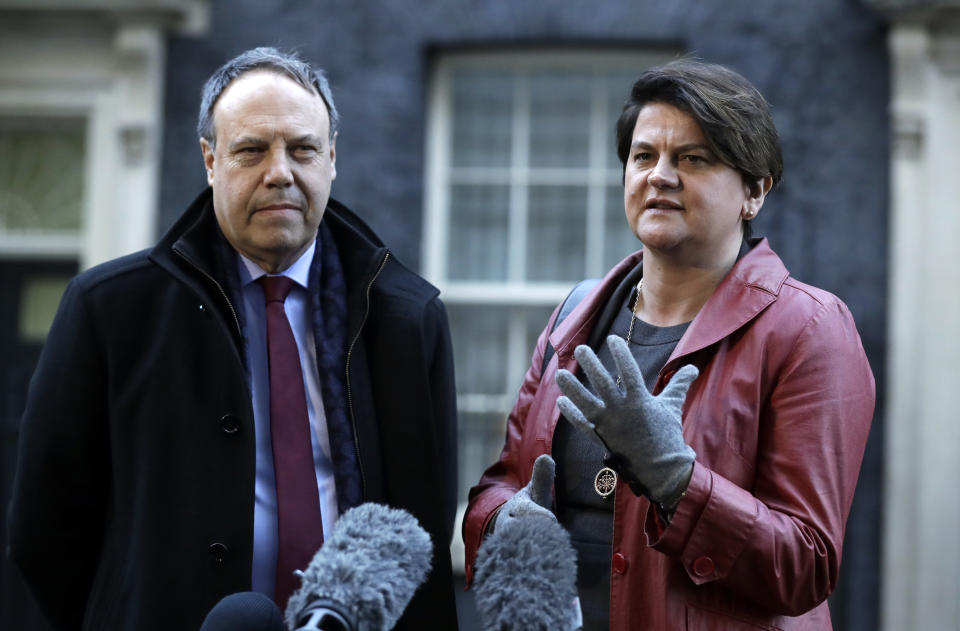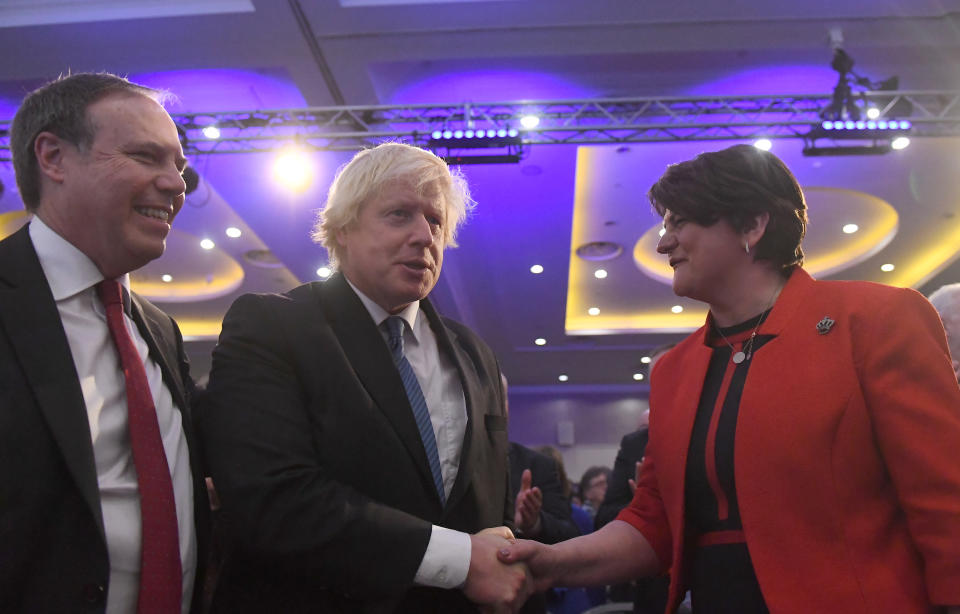The biggest issue at the heart of Boris Johnson's Brexit deal

Northern Ireland and its troubled history were always going to cast a huge shadow over Brexit — even if the issue received nary a mention prior to the 2016 referendum.
Describing the future of Northern Ireland in a post-Brexit United Kingdom as the central element of Prime Minister Boris Johnson’s newly-agreed Brexit deal would be an understatement. Rather, the matter gets to the very core of why the UK has repeatedly stumbled in its quest to leave the European Union.
“For me, since day one, what really matters are the people of Northern Ireland and Ireland. What really matters is peace,” said Michel Barnier, the EU’s chief Brexit negotiator on Thursday, moments after Johnson’s deal had been agreed.
The deal, in many respects, shelves the “backstop” proposal that has vexed negotiations from the beginning. But the deal very much holds onto some of its crucial aspects — specifically the ones designed to prevent a hard border between Ireland and Northern Ireland.
READ MORE: Boris Johnson has struck a Brexit deal with the EU
What is the problem with a hard border?
Since the 1998 Good Friday Agreement, there has been an open border between the six-county Northern Ireland, which is part of the UK, and the 26 counties of Ireland, which is independent.
But it was the European Union’s single market that provided the scaffolding for such an arrangement. While the century-old Common Travel Area between Ireland and the UK theoretically allows free movement between the two countries, it was not until the introduction of the single market in 1993 — and the concurrent abolishment of customs controls — that the basis for the complete elimination of the border was created.
If Northern Ireland was to leave the bloc’s customs union, some sort of border infrastructure would be necessary to protect the single market. And that could lead to a return to violence in the region.
READ MORE: Hard border in Northern Ireland will see ‘return to violence within a week’
The 1998 agreement ushered in two decades of relative peace and stability in Northern Ireland. In the 30 years prior, clashes between unionists, who want Northern Ireland to remain part of the UK, and republicans, who want the six counties to unite with Ireland, took the lives of more than 3,600 people.
Tens of thousands of British troops were deployed to Northern Ireland to try and curb the violence, which became known simply as “the Troubles”.
The Good Friday Agreement itself provided the avenue for the phasing out of the British military checkpoints that had been introduced during the height of the Troubles.
What has been agreed?
The backstop in Theresa May’s Brexit deal was set out as a fallback scenario — one that would only come into effect if the UK and EU failed to agree on a sufficiently close post-Brexit trading arrangement.
But, in the new deal, it is no longer an insurance policy. Rather, the UK has now accepted that Northern Ireland may have to be subject to EU customs rules and oversight indefinitely. (The agreement insists, however, that Northern Ireland will still be a part of the UK’s customs union.)
Instead of occurring at the border, regulatory and customs checks on goods will take place at ports on the Irish Sea, which separates the island of Ireland from Great Britain.
Why is the DUP against the deal?

For Northern Ireland’s Democratic Unionist Party (DUP), Johnson’s Brexit deal represents a vertiginous moment. One major concession given by the EU is some semblance of a time limit on this arrangement. Northern Ireland’s Stormont Assembly will get the right to vote every four years on it — essentially giving Northern Irish politicians the opportunity to opt out of the EU’s rules.
For the DUP, that is problematic in part because it currently does not have a majority in Stormont, and would thus be unable to exercise a veto over the plan.
It is also problematic for other reasons, such as the fact that Northern Ireland has been without an executive at Stormont for nearly three years due to a political stalemate between the DUP and Sinn Féin, a republican party that is in favour of a united Ireland and opposes Brexit.
READ MORE: Pound volatile as UK and EU reach new Brexit deal
The DUP would also not ordinarily be front and centre in these negotiations. But after the 2017 UK general election, the Conservative Party, which lost seats, became dependent on the support of the DUP’s 10 MPs in Westminster.
“These proposals are not, in our view, beneficial to the economic wellbeing of Northern Ireland and they undermine the integrity of the [United Kingdom],” the DUP said on Thursday.
The DUP warned that the arrangements will become “the settled position” for Northern Ireland, saying that the deal “drives a coach and horses” through the 1998 Good Friday agreement.

 money
money 
